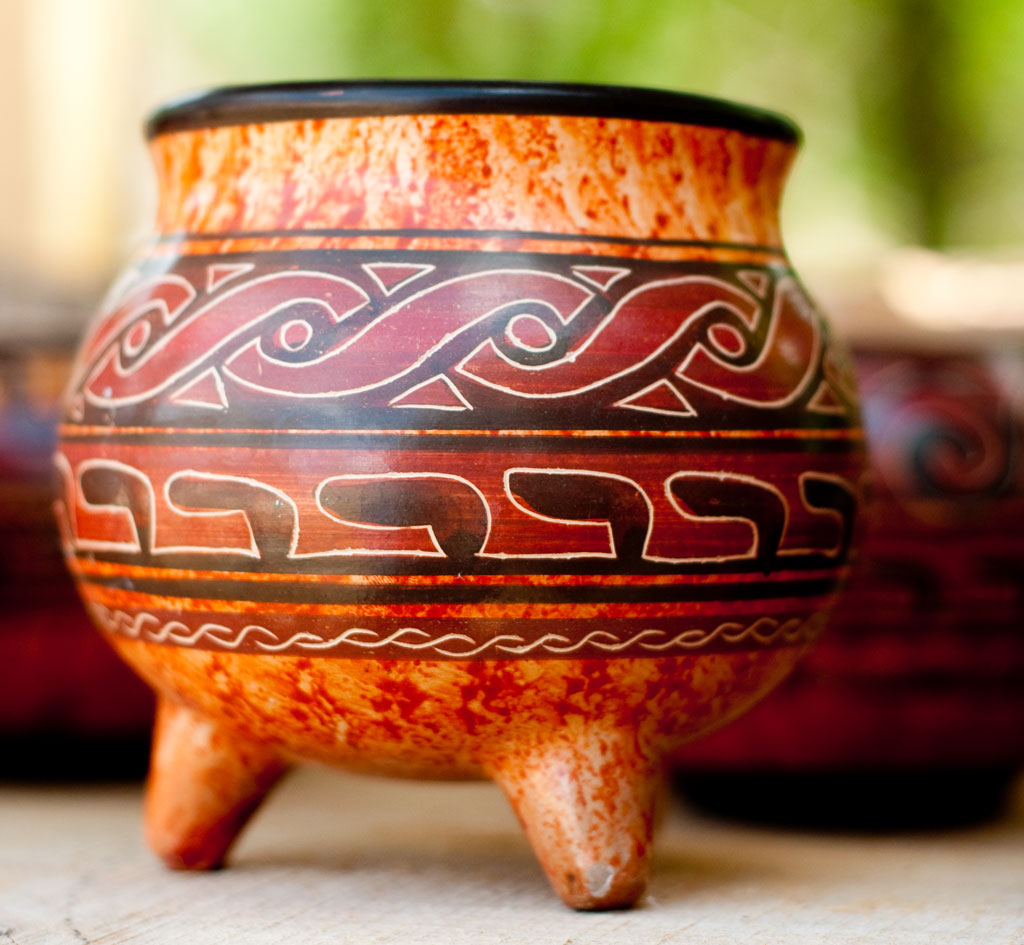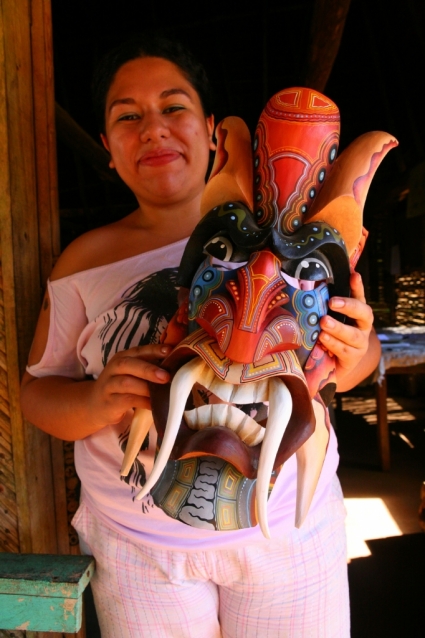Historically, Costa Rica has been relatively impoverished in the area of indigenous arts and crafts. The country, with its relatively small and heterogeneous pre-Columbian population, had no unique cultural legacy that could spark a creative synthesis where the modern and the traditional might merge. And social tensions, often catalysts to artistic expression, felt elsewhere in the isthmus were lacking. In recent years, however, artists across the spectrum have found new confidence, and the arts are flourishing.

Guaitíl pottery is synonymous with Costa Rica’s indigenous crafts. Photo © Bryan Guzman, licensed Creative Commons Attribution.
By the late 1950s, many local artists looked down on the work of the prior generation as the art of casitas (little houses) and were indulging in more abstract styles. Today, Costa Rica’s homegrown art is world-class. Costa Rica Art Tours offers day-long visits to various leading artists’ studios, including that of Rodolfo Stanley, whose works seemingly combine those of Henri de Toulouse-Lautrec with Paul Gauguin.
The Boruca people are known for their devil masks and balsa ornamental masks featuring colorful wildlife and indigenous faces. At Guaitíl, in Nicoya, the Chorotega people’s tradition of pottery is booming, flooding souvenir stores nationwide with quintessential Costa Rica pieces. In Escazú, master craftsman Barry Biesanz crafts subtle, delicate bowls and decorative boxes from carefully chosen blocks of tropical hardwoods.

A Boruca craftswoman holds up a colorful carved mask with large tusklike teeth. Photo © Christopher P. Baker.
Many of the best crafts in Costa Rica come from Sarchí, known for its carretas (oxcarts) and rockers. Although full-size oxcarts are still made, today most of the carretas are folding miniature trolleys that serve as liquor bars or indoor tables, and half-size carts used as garden ornaments or simply to accent a corner of a home. The carts are decorated with geometric mandala designs and floral patterns that have also found their way onto wall plaques, kitchen trays, and other craft items.
The country is one of the southernmost of the “marimba culture” countries using the African-derived marimba (xylophone). The guitar is also a popular instrument, especially as an accompaniment to folk dances such as the punto guanacasteco, a heel-and-toe stomping dance for couples, officially decreed the national dance.
Guanacaste is the heartland of Costa Rican folkloric music and dancing. Here, even such pre-Columbian instruments as the chirimia (oboe) and quijongo (a single-string bow with gourd resonator) are still used. Dances usually deal with the issues of enchanted lovers (usually legendary coffee pickers) and are based on the Spanish paseo, with pretty maidens in frilly satin skirts and white bodices circled by men in white suits and cowboy hats, accompanied by tossing of scarves, fanning of hats, and lusty yelps from the men.
When it comes to dancing, Ticos prefer the hypnotic Latin and rhythmic Caribbean beat and bewildering cadences of cumbia, lambada, merengue, salsa, and soca, danced with sure-footed erotic grace. The Caribbean coast is the domain of calypso and reggae. Says National Geographic: “To watch the viselike clutching of Ticos and Ticas dancing…is to marvel that the birthrate in this predominantly Roman Catholic nation is among Central America’s lowest.”
On the Caribbean, the cuadrille is a maypole dance in which each dancer holds one of many ribbons tied to a pole: As they dance they braid their brightly colored ribbons.
Costa Rica supports a thriving acting community. In fact, Costa Rica supposedly has more theater companies per capita than any other country in the world. The streets of San José are lined with tiny theaters—everything from comedy to drama, avant-garde, theater-in-the-round, mime, and even puppet theater. Performances are predominantly in Spanish. The English-speaking Little Theater Group is Costa Rica’s oldest theatrical troupe; it performs in its own theater in Escazú.
Excerpted from the Tenth Edition of Moon Costa Rica.